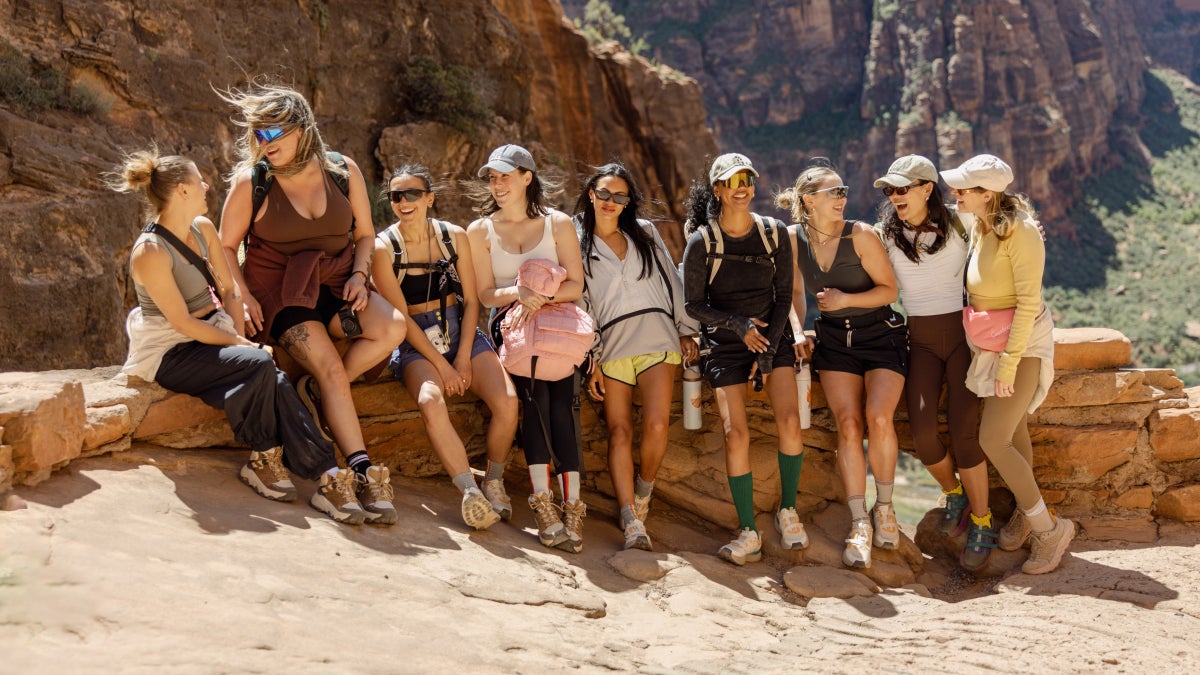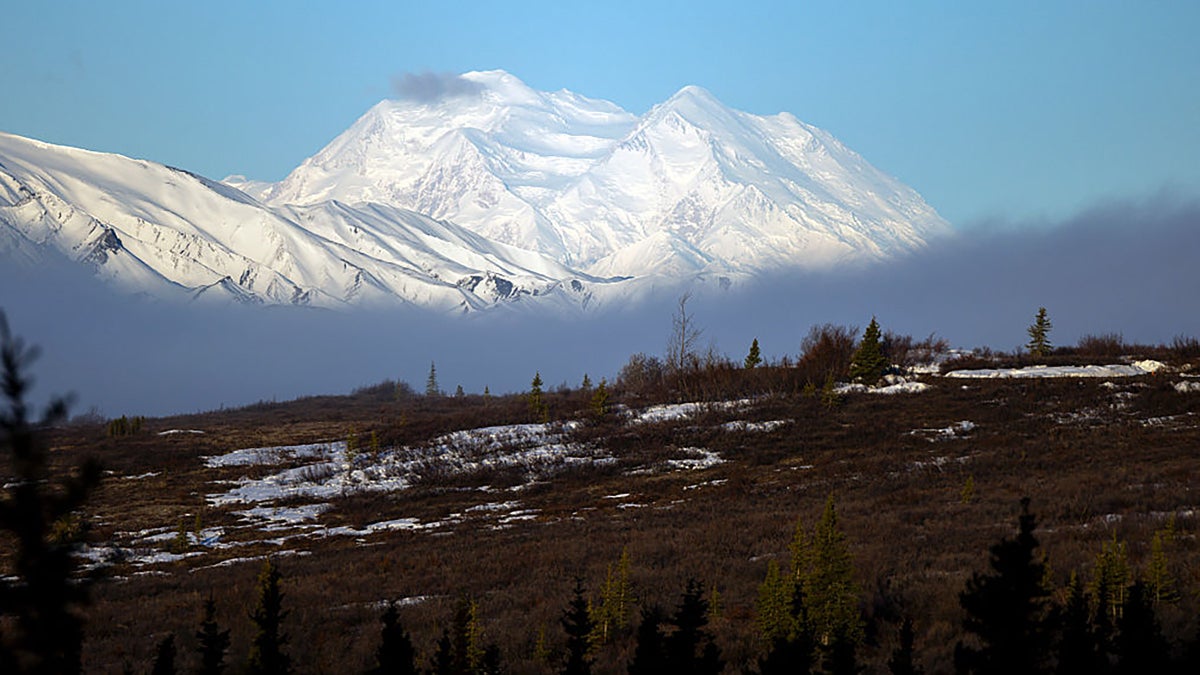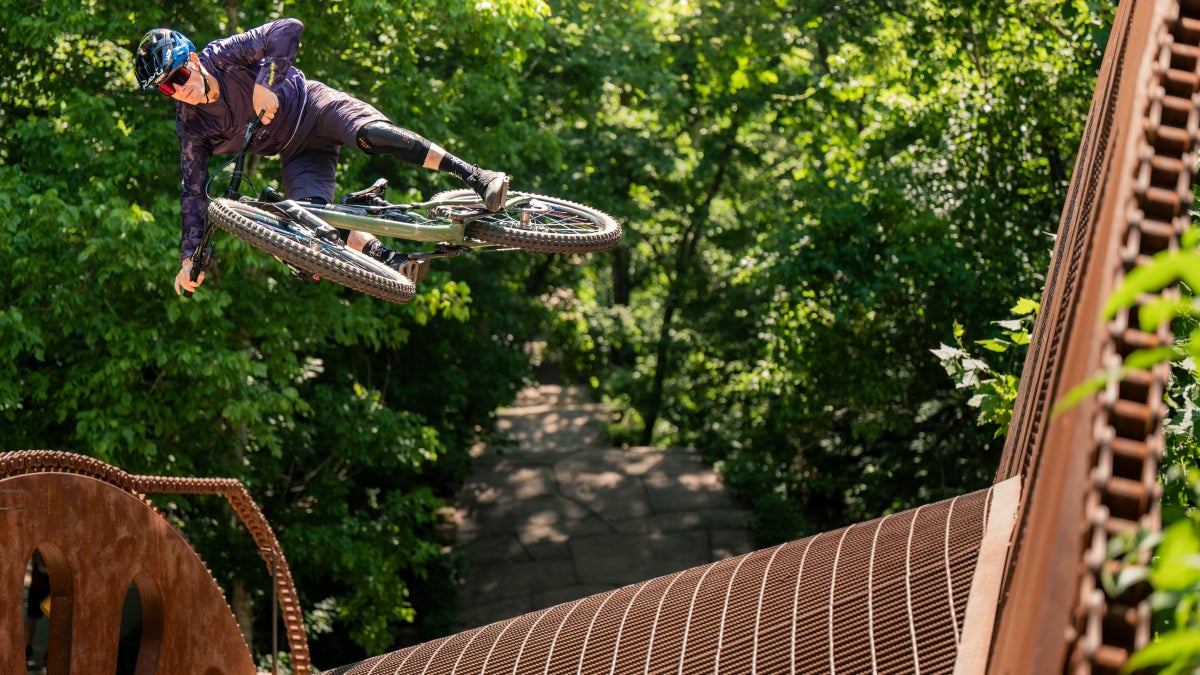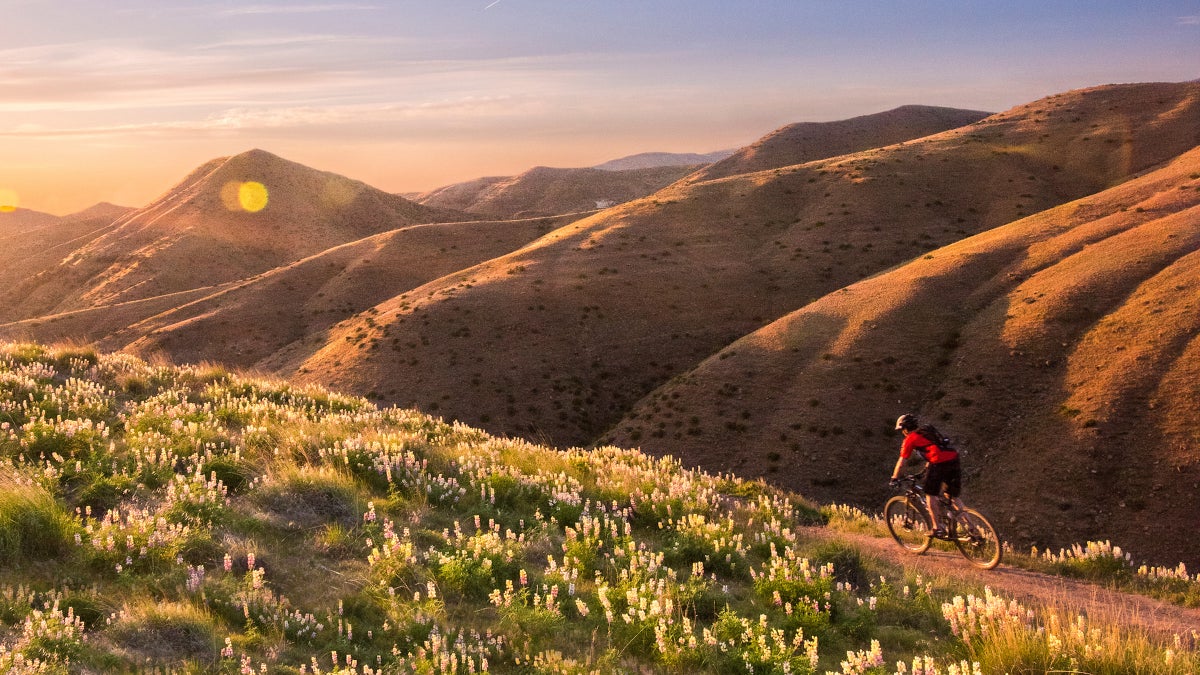
Summer doesn’t officially kick off until June 20 at summer solstice. But let’s be honest: if you haven’t dialed in your summer plans by then, you’ll be behind everyone else already dialing in their plans.
To help you single out a few long weekend summer destinations, I put together a list of can’t-miss trips that will satisfy just about everyone, no matter their preferences. This year, we’re focusing strictly on homegrown adventures—for a few reasons. First, the number of overseas travelers to the U.S. is down dramatically this year, because of their dislike of …you know who. This means fewer tourists in many of the country’s most popular spots, like national parks. It could also translate to cheaper bookings. What’s more, considering the seemingly intractable divide inside our own borders, there may be no better time to take a chance to reacquaint ourselves with our neighbors.
Now is the time to start planning your next outdoor adventure. Here’s our list of the best weekend summer trips to plan for in 2025. Consider this your guide to your greatest summer yet.
Columbia River Gorge, Oregon and Washington
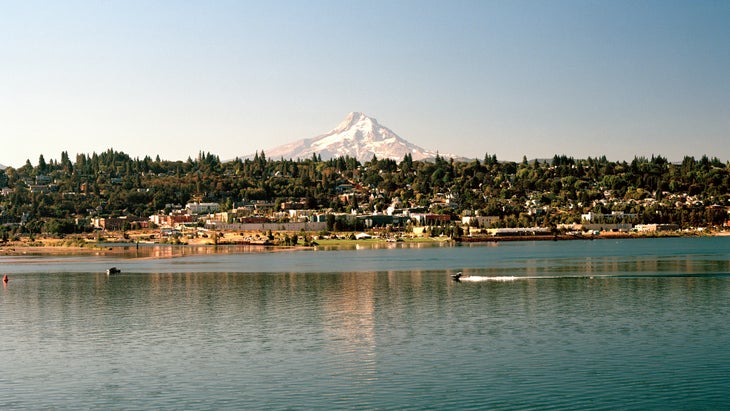
Why now: Cutting through the Cascade Mountains for 80 miles, The Gorge, as it is known, is the largest national scenic area in the U.S. It has it all, including the undisputed windsurfing capital of North America, Hood River. It’s also home to an increasing number of craft breweries, farm-to-table restaurants, boutique wineries, and all the other gastronomic offerings that helped make Portland, at the western end of the gorge, a foodie capital. In short, for a multisport destination in the heat of the summer, the Gorge is hard to beat.
Adventure intel: For hiking, Eagle Creek Trail, which reopened in 2021 after a 2017 fire, is one of the most popular trails in the area—and with good reason. It courses through the temperate rainforest, past tall basalt cliffs, and over a narrow gorge 150 feet above the creek at High Falls. For mountain biking, Post Canyon, on the Oregon side of the gorge, offers everything from beginner to advanced cross-country rides. For water activities, Hood River serves as the obvious—and best—base area, with kitesurfing and kayak rentals and lessons available along the waterfront.
Pro tip: A recreation pass is required for accessing many of the hiking areas in the national scenic area.
Where to stay: This spring, glamping company Under Canvas unveiled its new Columbia River Gorge camp, set on a stunning 120-acre property in Washington’s White Salmon River Valley, with views of Mount Hood (from $229).
Anywhere on the Appalachian Trail

Why now: America’s legendary 2,198-mile footpath offers practically endless section-hiking opportunities come summer, and this year the Appalachian Trail Conservancy, the nonprofit devoted to protecting and managing the trail, celebrates its centennial. Festivities are planned along the trail’s entire length, including in popular AT communities like Harrisonburg, Virginia (June 14), and Hot Springs, North Carolina (May 2-3). But the primary event is the ATC’s Centennial Gala in Washington, D.C., on June 11, which is bringing together long-time supporters, partner organizations, and public officials to raise funds to protect the Appalachian National Scenic Trail, the world’s longest hiking-only trail.
Adventure intel: For a weekend trip, the only practical way to hike the AT is to tackle sections, and the trail is intentionally routed away from towns, so camping is really the only option if you’re overnighting it. That is unless you decide to stay at a sort of base-camp town near your route—a place like Highlands, North Carolina, or Weston, Vermont. Highlands, roughly 30 minutes east of the AT and situated within the Nantahala National Forest, is the quintessential southern mountain town, with stellar swimming, fishing, and paddling nearby. Weston, a small village on the east side of Green Mountain National Forest, is full of country charm and easy access to adventure opportunities, including four nearby ski resorts.
Pro tip: If you want to hike significant portions of the trail and avoid carrying a tent, the ATC has good recommendations for inn-to-inn hikes.
Where to stay: In Highlands, opt for the new Outpost Inn, a 14-room boutique hotel full of Appalachian charm and adventure bonafides, not to mention a front porch that’s perfect for relaxing after a day’s hike (from $169). In Weston, it’s hard to beat the recently-opened Weston, a 9-room retreat that’s owned by the family behind some of the world’s most iconic hotels, like New York City’s The Carlyle (from $450).
Big Sky, Montana
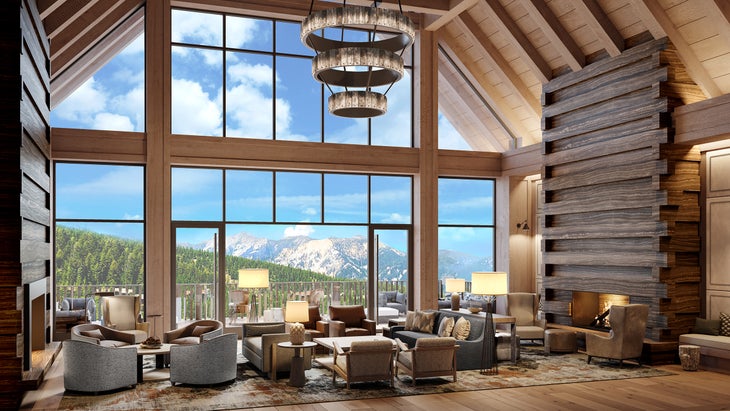
Why now: For years, Big Sky was basically a winter-only destination, in large part because the alpine valley didn’t offer much in the way of tourist infrastructure or nighttime fun. That’s all changed in recent years as the resort has attracted a raft of new and upgraded lodging options, including the upscale Montage Big Sky and the upcoming One&Only Moonlight Basin, which opens in November. Along with the lodging came new restaurants, coffee shops, and added amenities for year-round adventures. The combined effect has turned Big Sky into a legitimate year-round destination.
Adventure intel: Staying in the valley means it’s easier to take advantage of the nearby adventure options, including fly-fishing on the Gallatin River, lift-accessed mountain-biking from the base village, and touring nearby Yellowstone National Park. One of the best day hikes in the area is the 5.4-mile out-and-back Lava Lake Trail, which ends at an alpine lake with stunning views of the Spanish Peaks.
Pro tip: It’s usually most convenient to stay in Big Sky Town Center, slightly down valley from the ski area, because it offers walking access to great coffee shops like Blue Moon Bakery, the farmer’s market (every Wednesday night June through September), and good restaurants like The Rocks Tasting Room and Liquor Store.
Where to stay: The Wilson Hotel, which opened in 2019, is in the heart of the town center and has 129 suite rooms with full kitchens, a living area, and a workspace (from $274).
Wrightsville Beach, North Carolina
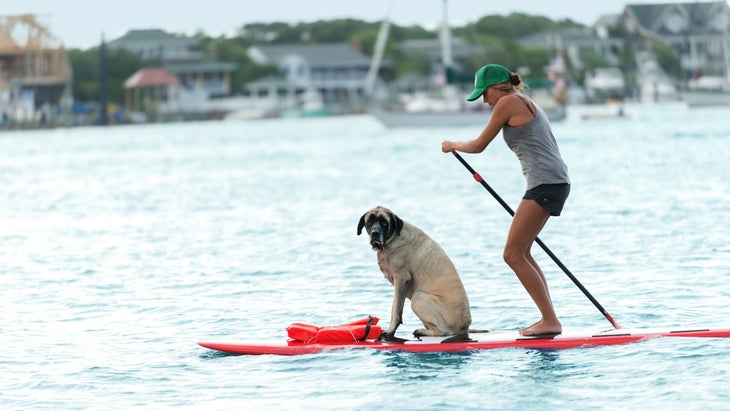
Why now: Wrightsville Beach, a tiny hamlet on a barrier island, has quietly emerged as a world-class water-sports capital with a few upgraded lodging options that make it worthy of a long weekend stay. There’s excellent surfing, SUPing, and lounging on five miles of wide, sandy beaches. Fishing is central to the culture here, as is surfing, and there are waves for riders of all levels, meaning it’s a great place for lessons and surf camps.
Adventure intel: With multiple waterways and miles of wild terrain, paddling is one of the most popular summertime activities at Wrightsville Beach. An excellent, if remote, paddling destination is Mansonboro Island Reserve, the largest undisturbed barrier island along North Carolina’s southern coast. The Reserve, as locals call it, is across the channel from Wrightsville Beach and can only be reached by boat. But once there, trails connect the bayside to the ocean, and hiking them is a good way to spot one of the island’s rarer bird species, like the American oystercatcher or the Least terns.
Pro tip: If you’re looking for nightlife and cultural activities, Wilmington, just 10 minutes away, is full of museums, boutique shops, and a historic downtown.
Where to stay: In January, outdoor-focused hotel brand Trailborn opened Trailborn Surf & Sound, a reimagined beach resort set on 3.5 acres of oceanfront property. As one of few hotels on the East Coast with both beach and sound access, every room has a water view.
The Erie Canal, New York

Why now: This year marks the 200th Anniversary of the waterway that transformed the Eastern Seaboard, and yet few people even know where the canal is located. As it happens, it courses through 365 miles of amazing New York scenery—rolling hills, winding river valleys, lush farmland, and historic towns—from Lake Erie in the West to the Hudson River in the East. To commemorate the bicentennial, the state is holding a series of events, many of which include recreational opportunities.
Adventure intel: The Erie Canalway National Heritage Corridor is full of outdoor adventures, including the NYS Canalway Water Trail, 450 miles of canals and interconnected lakes and rivers with more than 140 access points. There’s also an equally amazing bike path along the canal, the Erie Canalway Trail, with 360 miles of mostly pathway riding. For cyclists, it doesn’t get much better, or quainter, than this ride, with sections through the Finger Lakes region and Mohawk Valley.
Pro tip: One of the most unique experiences to be had on the water is kayaking through the Waterford Flight, a series of five locks that lift vessels from the Hudson River to the Mohawk River, bypassing Cohoes Falls, with a total gain of 169 feet in just over 1.5 miles.
Where to stay: The NYS Canal Corporation offers 18 primitive campsites along the canal for hikers, bikers, and paddlers during the summer (fees vary on location). For access points and campsites, the state offers an excellent interactive map.
Voyageurs National Park, Minnesota
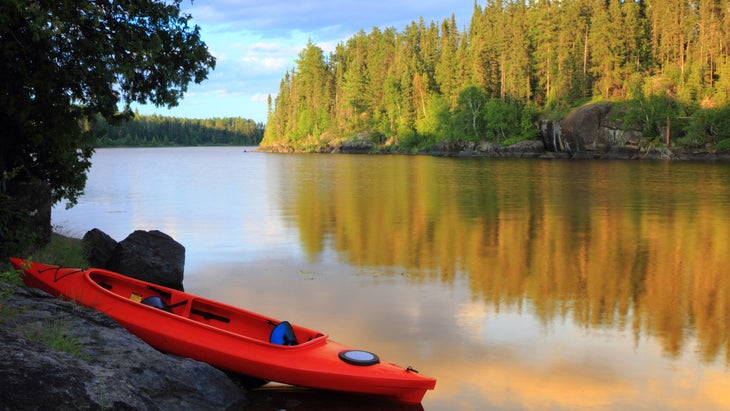
Why now: This year, Voyageurs park, 218,000 acres of pristine lakes and North Woods forests, is celebrating its 50th Anniversary. As part of the celebration, it’s opening the new Crane Lake Visitor Center, where you can learn about the park’s landscapes and history. It’s also where you can pick up your permits when venturing into the park’s interior, which is exactly what you should do.
Adventure intel: The park is a patchwork of land, water, and wetlands, and paddling is a mandatory experience, as is camping. At night, the stars come out, and the occasional auroras. As a designated International Dark Sky Park, there is no light pollution to diminish the view. Voyageurs is famed for its campsites, and it has 157 “frontcountry” campsites (and over 270 total) located shoreside. They all require a watercraft to get to, and they’re all great for experiencing the Milky Way.
Pro tip: One of the more unique experiences you can have in the park is sleeping on a rented houseboat. With the boat as your base camp, you can motor to remote coves and then use kayaks or a canoe to fish for walleyes and explore the area by manual, then return to an actual bed come nightfall.
Where to stay: There are various houseboat rental companies that serve different districts in the park, but 360-square-mile Rainey Lake, on the border with Canada, is usually the best bet for a true wilderness experience while on a houseboat.
Sonoma County, California

Why now: California’s Sonoma County, roughly an hour north of San Francisco, gets plenty of attention for its wineries but [[it]] often gets overlooked for its commitment to adventure. Case in point: This year Save the Redwoods League is helping expand Monte Rio Redwoods Regional Park by adding 1,517 acres that will help connect all of its protected land from the Russian River to the Pacific Ocean. In the future, the new land acquisition will feature hiking and mountain biking trails through ancient redwood forests. In the meantime, Sonoma still has plenty of hiking opportunities—more than 150 miles worth across the county’s park system.
Adventure intel: Sonoma County has it all—hiking in the redwood forests, paddling and tubing down the Russian River, even SUPing along the coast on Bodega Bay. It’s also become one of the best destinations in the state for road cycling, and one of the area’s more popular rides is a 51-mile circuit around Healdsburg, with rolling roads that go past many of the area’s wineries.
Pro tip: The town of Healdsburg has dozens of hotels, most of which cater to Bay Area folk coming up for wine tastings. Instead, book in Guerneville, a rustic hamlet on the shores of the Russian River surrounded by towering redwood trees.
Where to stay: The River Electric, a glamping resort set in a redwood grove, opened this Memorial Day. It’s a welcoming mashup between a national park campground and a private Soho House-style members club (from $315).
Denver, Colorado
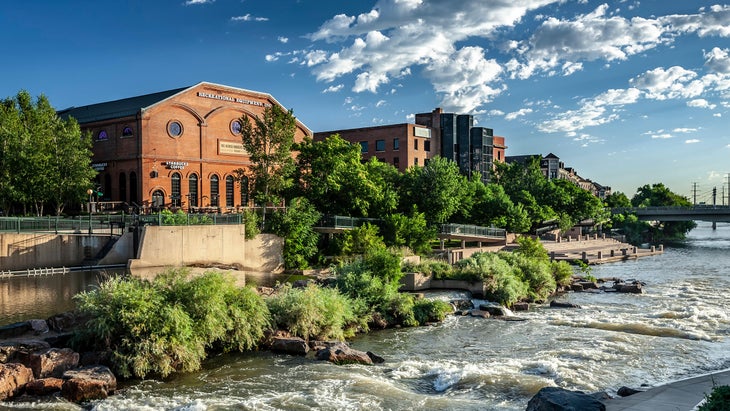
Why now: The Mile High City has always been a great jumping off point for Rocky Mountain fun, but it continues to evolve as a world-class urban adventure hub in itself. This year, the city bolsters that reputation with the acquisition of the 155-acre Park Hill Golf Course. The private golf course, which closed up shop in 2018, is the largest addition to Denver’s park system in more than a century. Planning is still underway on how to best use the site overall, but this summer the city will restore portions of it with native plant species and walking trails, even a dog park, until it finalizes how to reimagine the site overall.
Adventure intel: Denver delivers more than 850 miles of paved, off-street biking and walking trails, including the slopestyle MTB course, dirt jumps, and pump tracks at Ruby Hill Bike Park. For paddlers, Confluence Park, at the intersection of Cherry Creek and the South Platte, is just minutes from downtown and has man-made kayak chutes for playboating.
Pro tip: Denver’s River North Arts District (RiNo) has transformed itself over the last decade into a world-class creative hub. It also offers easy access to the city’s many outdoor adventures, including walking access to the 32-mile long South Platte River Trail. Book here if you’re staying in town.
Where to stay: The Source Hotel, a combination boutique hotel, artisan market hall, and creative hub, is a good base camp in RiNo, with sparse but comfortable rooms, and even a free beer at check-in (from $224 per night).
Nantucket, Massachusetts

Why now: This island, 26 miles off Cape Cod, is known more for its popped-collar crowd than its outdoor adventures, but it’s full of outdoor fun come summer—from paddling in Nantucket Harbor to sailing on the open Atlantic. Until the last few years, the island’s hotels were fairly, well…stale. Not anymore. The historic White Elephant underwent a massive refresh recently (from $645), as did the cottages and lofts at the Boat Basin, which offer complimentary access to bicycles, fishing rods for kids, and shuttles to the beach (from $570 per night). So now there’s great adventures and great places to stay.
Adventure intel: One of the best ways to experience Nantucket’s rugged side is by hiking in the Coskata-Coatue Wildlife Refuge, over 1,100 acres of beach dunes covered with bayberry bushes, heather, and beach grass. There are 16 miles of over-sand vehicle routes, but walking on the eastern beaches offers an easy way to get a taste of the island’s remoteness.
Pro tip: The island’s windswept beaches and sharp points make landing a trophy striped bass, bluefish, or false albacore a real possibility. Many people even fly-fish for them from shore. Great Point, in the shadow of the Great Point Lighthouse, is one of the most popular areas for surfcasting. Book a guide at ACK Surfcasting.
Where to stay: The 65-year-old Beachside Hotel, which reopened in May after a multi-year renovation from a down-and-out motel into a retro-chic hotel, has 91 hotel rooms, a courtyard pool, and a new lobby, bar, and restaurant.
Glacier Bay National Park and Preserve, Alaska

Why now: Glacier Bay National Park, with its 3.3 million acres of mountains, glaciers, rainforest, and fjords, is celebrating its centennial this year. Established as a national monument in 1925, the park is as wild as it gets, with opportunities to witness calving glaciers, paddle in the same waters as puffins and whales, and hike through old-growth forests dripping with lichen and moss.
Adventure intel: Getting on the water is essential if you want to experience the park’s true majesty—whether it’s a boat tour, kayaking in the fjords, river-rafting, or fishing in the bay.
Pro tip: The park’s glaciers, over 1,000 of them, are worth seeing up close, and the best way to do that is with a guided hike in the backcountry. Of course, if you want to stretch your legs on land, the relaxed trails at Bartlett Cove are worthwhile.
Where to stay: Not many people stay overnight in the park, as most are visiting on cruise ships. But if you want to crash for a night or two inside Glacier Bay’s boundaries, the best option is the historic Glacier Bay Lodge, in Bartlett Cove (from $274). The rooms are basic, but you’re right in the park itself, so you can explore on foot, plus the lodge offers a daily boat tour on its highspeed catamaran.
Chattanooga, Tennessee
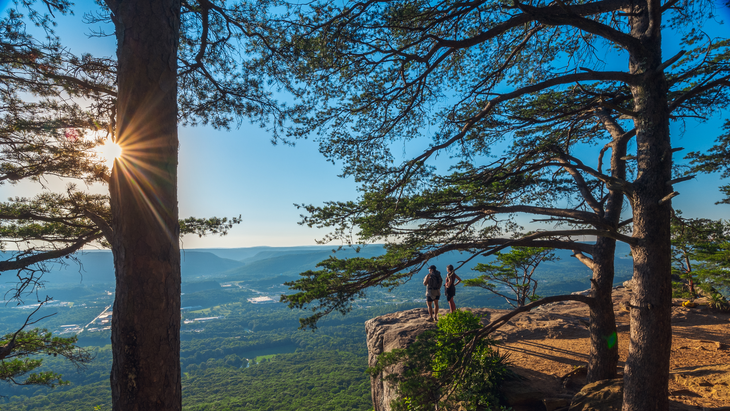
Why now: In April, Chattanooga was named North America’s first National Park City for its commitment to integrating nature and urban life. The recognition was the final cherry on top of a long, dramatic transformation for a city that was one of the most polluted in the U.S.in the 1970s. Today, it’s a top outdoor destination.
Adventure intel: Chattanooga, population 185,000, sits in the foothills of the Southern Appalachians, so outdoor adventures are never far. There’s kayaking and SUPing on the Tennessee River, which winds through downtown, and 100 miles of singletrack within 20 miles of town. This includes 92-acre Stringer’s Ridge Park, a wooded wilderness inside city limits with 6 miles of flowy singletrack. The area has also become a hotbed of rock climbing, and the most popular crag for out-of-towners is Stone Fort, a bouldering area 20 miles north of downtown with 400 problems on high quality sandstone.
Pro tip: For traditional climbers, the Tennessee Wall in Prentice-Cooper State Forest is widely considered one of the best climbing areas in the country.
Where to Stay: For those looking for a little comfort and access to Chattanooga’s cultural side, the Hotel Chalet at The Choo Choo (from $165) is an unpretentious but upscale hotel located in the historic Chattanooga Choo Choo district. The hotel even has renovated Pullman train carriages from the early 20th century that you can book for an overnight stay.
Maui, Hawaii

Why now: Since wildfires ravaged the island in the summer of 2023, Maui has labored mightily to recover. There is still much work to be done, but increasingly the island needs tourists to help it return to a sense of normalcy. The Hawaiian tourism agency has gone so far as to say that “the best way to support Maui is through travel.”
Adventure intel: Hawaii may not be a top-of-mind destination come summer, but the temperatures are nearly perfect, ranging from the mid-70s to upper-80s. The rains have ceased, and the ocean is calmer, making way for more snorkeling and paddling opportunities. Hiking in Haleakalā National Park is still great. And all the amazing farm-to-table restaurants, empty stretches of sand, and vibrant towns—like Wailuku, Pāʻia, and Makawao, welcome fewer guests than in the high season.
Pro tip: To help encourage tourists to come back and visit meaningfully, the Hawai’i Tourism Authority created the Mālama Hawaiʻi Program, where people signing up for a dedicated volunteer opportunity can qualify for special discounts at participating hotels. A list of opportunities is available on its site.
Where to stay: For a heavier dose of adrenaline, look toward the eastern, windward side of the island. It’s a remote, rugged, and lush landscape that’s full of waterfalls and vivid green hues. Hana is the main town on this side of the island, and one of the better upscale lodging options is the Hana-Maui Resort, a historic inn recently upgraded into a full-service resort with an off-the-grid vibe (from $450).
Boise, Idaho

Why now: Idaho’s capital has long been considered one of the mountain West’s most accessible outdoors hubs. Now an influx of investment dollars, along with coastal transplants since the pandemic, has helped turn downtown into a thriving locus of cultural, gastronomic, and commercial energy. New hotels, shops, and restaurants have added dynamism to a city that could often feel one-note. It’s ripe for a long weekend trip.
Adventure intel: The Boise River Greenbelt parallels the river for 25 miles right through the heart of the city, offering tree-lined paths for walking and biking. At the Boise Whitewater Park, just downstream of downtown, three engineered waves create one of the West’s great urban whitewater playgrounds. And the river also makes for great flatwater SUP outings come summer.
Pro tip: The city’s Ridge to Rivers Tail System, a vast network of over 190 miles worth of interconnected hiking and biking trails in the Boise Foothills, is getting two new trails. The 2.9-mile Curlew Connection Trail was completed last fall and construction on the 2-mile Sideshow Trail, a downhill-specific mountain bike trail, began this spring.
Where to stay: Hotel Renegade (from $171) is one of the newest and best entrants on the scene, with 122 rooms, a rooftop lounge called The Highlander, and the Baraboo Supper Club, a chophouse-style restaurant that feels more like a neighborhood joint.
Traverse City, Michigan
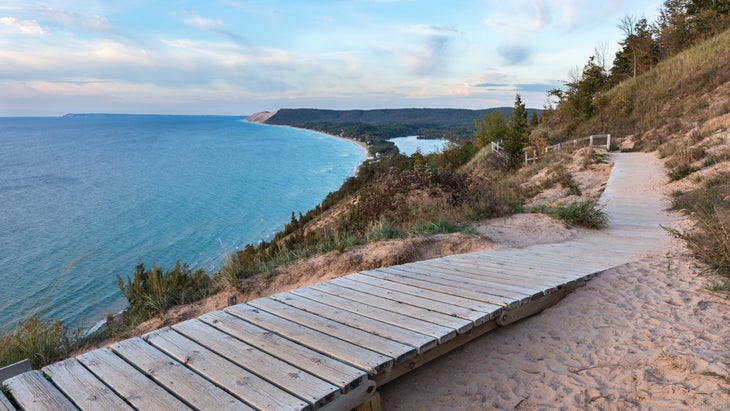
Why now: Traverse City, in northwest Michigan, is home to sandy beaches, award-winning vineyards, great restaurants, eight historic lighthouses, and Sleeping Bear Dunes National Lakeshore. It’s also been on a bit of a development spree in the last few years, with a number of name brand hotels opening or breaking ground. The hotels—Fairfield by Marriott Inn & Suites, Hyatt House, etc.—are all standard fare, but together they demonstrate a bullish outlook investors have in the city’s year-round tourism potential.
Adventure intel: Summer is the busiest time of year, and it’s hard to beat, with all of the classic Michigan adventures, like biking through wine country on the 17-mile Leelanau Trail. For water enthusiasts, there’s excellent sailing and paddling options on Lake Michigan, with plenty of rental kayaks along the waterfront.
Pro tip: One of the most popular trail networks in this area of the state is the Vasa Pathway, which is maintained for both summer and wintertime activities. The multi-use trail has a series of loops (3K, 5K, 10K, and 25K) that includes cross-country options through the hardwood forests for both serious mountain bikers and neophytes alike.
Where to stay: If you want to avoid the chain hotels, one of your best bets is The Alexandria Inn, a 32-room boutique property set directly on the shores of the East Arm of Grand Traverse Bay (from $190). The rooms are simple but comfortable. Of course, the reason you’re staying here is not the room itself but the soft-sand beach below your balcony.
Ryan Krogh is a writer and editor based in Austin, Texas. He writes frequently about the outdoors and travel. This summer he has trips planned to Montana, Dominica, Costa Rica, and Paris, France. He also has plans to paddle on the Erie Canal in August, the only trip coinciding with this list of ideas, although he fully endorses all of these destinations based on previous adventures.

The post The Best Summer Weekend Trips of 2025 appeared first on Outside Online.












